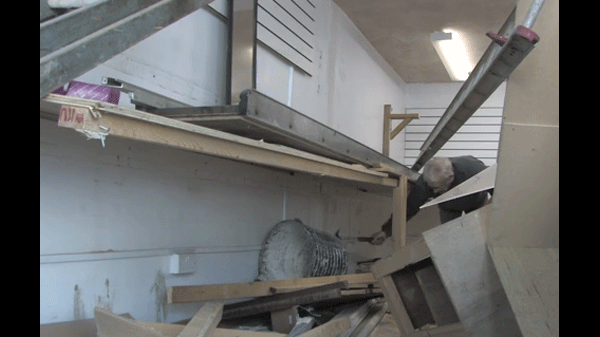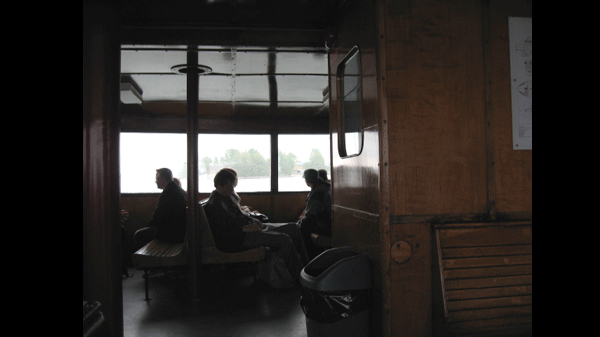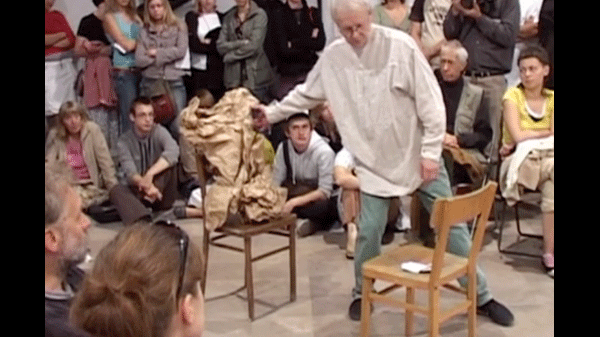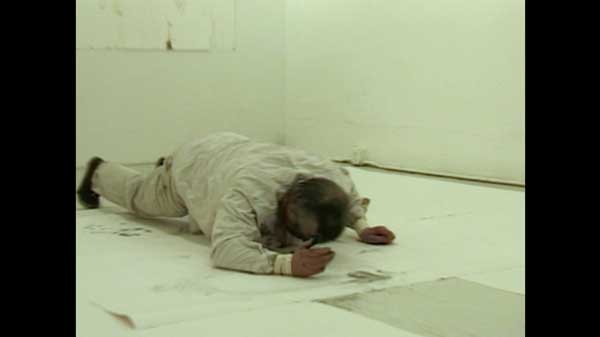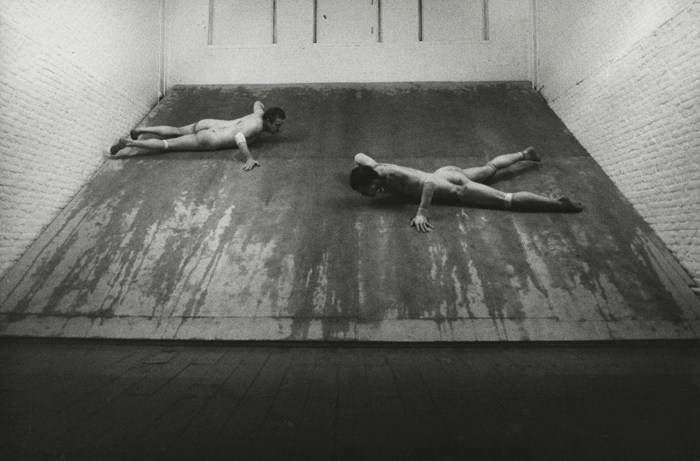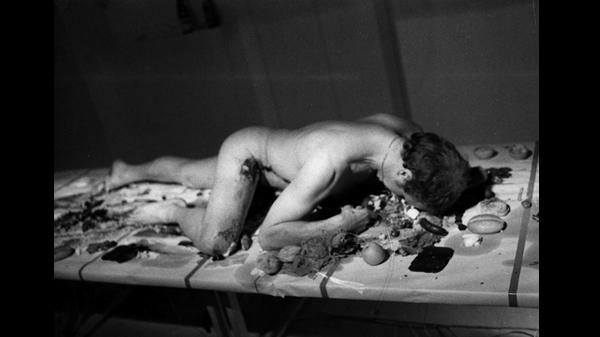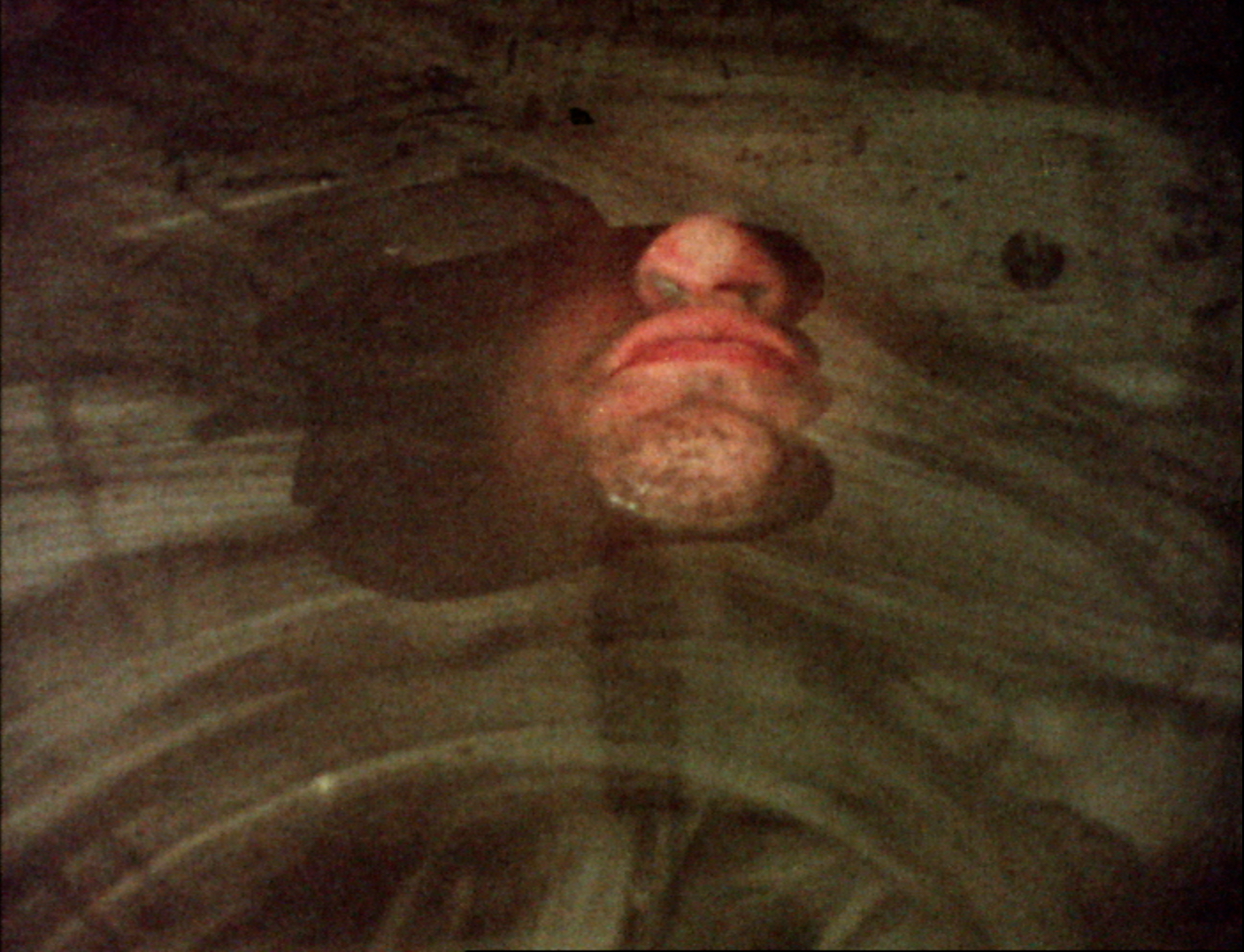Stuart Brisley (born in 1933 in Haslemere, Surrey, England)
“He studied at Guildford School of Art(1949–54) and the Royal College of Art in London (1956–9), as well as at the Akademie der Bildende Künste in Munich (1959–60) and Florida State University in Tallahassee (1960–62).
He has been singularly consistent throughout a career spanning over 60 years in his involvement with political and social issues (he was a founding member of the Artists Union) and a desire to challenge the established cultural expectations has been embedded in his subject matter. He is a republican and throughout his career has made works which question the British class system. Brisley has come to the conclusion, as stated in his recent novel “Beyond Reason: Ordure” (2003) that ‘what goes down comes up’.
Although often hailed as the ‘godfather of British performance art’, Brisley is a more complex figure, Emeritus professor at the Slade and enfant terrible of the art world since the 1960s, whose seminal practice extends to painting, sculpture, community projects, pseudo-curatorial installations,sound, video, films and teaching. Uniting all these working methods is a concern for the everyday and for things that have fallen down (detritus on the streets, human excrement) and the marginalised (miners, bin men, homeless).
‘All work’ Brisley comments, ‘needs content. Without content there is no work’. His probing subjects and continuous engagement with the disposessed, the vernacular and the absurd together with the examination of landscape through a political prism has been compared to Samuel Beckett and Harold Pinter.
In 1968, Brisley helped lead the Hornsey Sit-in, in protest of teaching practices common at British art schools. This protest enhanced his reputation for challenging norms, and his appointment to the faculty as a student advisor/tutor and later as professor of Media Fine Art Graduate Studies at the Slade School of Fine Art, part of the University College London, was and remains unique in that he was the only staff member to be directly appointed by the student body.
He has been influential on many of the present generation of Young British Artists and his radical practice has been an important contribution to British art, playing a fundamental role in the development of installation and performance art as well as layering mediums. He was the Head of Media Fine Art at Slade School and among his diverse students were Mona Hatoum, Andrew Kötting, Douglas Gordon, Hayley Newman, Donald Rodney, Zarina Bhimji, Sutapa Biswas, Catherine Yass and Marcia Farquhar. [5]
As Richard Gott wrote in the introduction to the catalogue for Brisley’s exhibition Black at the South London Gallery in 1996, ‘Homage to Brisley’s performances and installations and references to his work, can be found in many unexpected places and in the work of other artists’.
His work examines the actuality and context of art within Western capitalism. At the centre of this diverse practice lies his exploration of the essential qualities of what it means to be human. He has challenged the human body in physical, psychological and emotional ways. Vulnerable, exposed, Brisley’s ‘body in struggle’ dramatized the conflict between human autonomy and the instrumental forces of bureaucratic and state power.
Influenced by Marxist cultural appraisal of the 1960s and it’s critical afterlife, he adopted performance as the democratic basis for a new relationship between artist and audience. Brisley first achieved notoriety in the 1960s and ’70s and is perhaps best known for his disturbing physical performances.
Brisley’s iconic performance And For Today, Nothing, made at the Gallery House, London in 1972 in which Brisley lay for two hours at a time in a bathtub of putrefied matter over a 10 day period alongside the film work Arbeit Macht Frei, 1972, induce notions of human waste of an entirely different order. Equally present in these works is Brisley’s clear evocation of Jacques-Louis David’s iconic La Mort de Marat, 1793 – a painting described by T. J. Clark as the first modernist painting, for “the way it took the stuff of politics as its material, and did not transmute it”.
Notable socially centred projects include Hille Project (1970), Peterlee Project – History Within Living Memory (1976–77), The Cenotaph Project with Maya Balcioglu (1987–1991), and the collaborative Museum of Ordure (2004– ). On his return from Peterlee, Brisley created his own imaginary institution and between 1979 and 1986 he instituted The Georgiana Collection, working with his local community, in this case homeless people sharing the same street where he lived.
‘Recently Brisley, in a series of performances and an extended text, has concerned himself with ordure and its collection by a character named Rosse Yael Sirb, a character he – the artist narrator – claims to have first met while he was a corporal in charge of stores during national service in West Germany’, Sirb is contrasted by another figure, Bertrand Vollieme, collector of junk and detritus.’ [8]
In his performance work, Brisley engages the audience and establishes a dialogue of action and reaction that induces a release from conventions of social behaviour. He has also examined the body politic and images of power; his paintings, prints and sculpture have expressed a literary and symbolic approach to power as represented in the media.
Brisley’s engagement with the Revolutionary moment has resurfaced throughout his career. This has often been channeled through the French Republican Calendar implemented between 1793 and 1805, devised in an attempt to eradicate all religious and royalist influences from daily life. The move to decimalization and the 10 day week has itself provided a consistent structure for many of Brisley’s durational works up to and including his most recent Next Door (The Missing Subject), 2010 made over a 10 day period in London and later presented as a film.
Recent works also include Brisley’s disarmingly sober watercolour landscapes from a series entitled Jerusalem, a fitting reference to William Blake’s lauded poem and substitute national anthem in which trees and foliage seem to sprout and grow from amidst the rubble.
His critical motivations remain unchanged: the production of a political art that in its richness of metaphor and range of expressive resources is capable of capturing the ‘morbid symptoms’ of capitalist culture. [9]
In Brisley’s work, a strong formalist aesthetic together with an internal realism (lyricism) underpins the image making process which is converted into a political dialogue. With the radical impulse (performance) comes the undoing of the object and the rediscovery of the image. In sculpture (and painting) the image is present from the beginning since that is how an art object is made and it is how the historical conventions of art are understood: the artist giving form to original formlessness. In the performance this is reversed: the image is only implied at the end which is a reversal. Performance presents a suggested beginning at the end of the work.
Brisley believes in the perpetual attempt towards a goal of sense or meaning but that any discored truth may only be temporal.”
www.stuartbrisley.com

